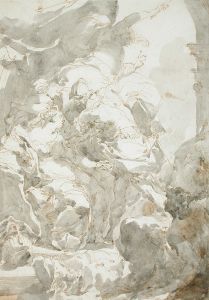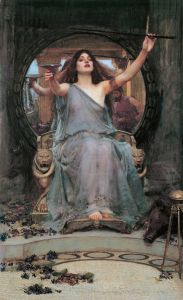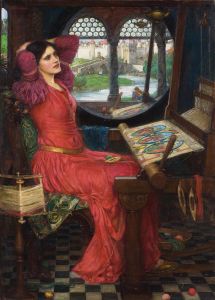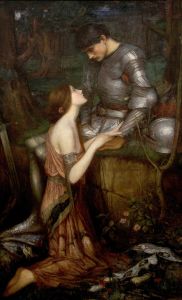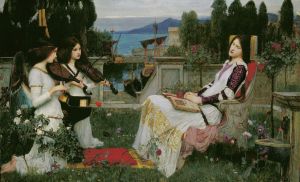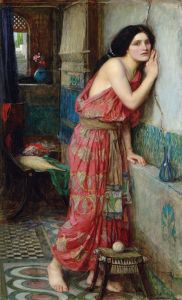
Circe Invidiosa
A hand-painted replica of John William Waterhouse’s masterpiece Circe Invidiosa, meticulously crafted by professional artists to capture the true essence of the original. Each piece is created with museum-quality canvas and rare mineral pigments, carefully painted by experienced artists with delicate brushstrokes and rich, layered colors to perfectly recreate the texture of the original artwork. Unlike machine-printed reproductions, this hand-painted version brings the painting to life, infused with the artist’s emotions and skill in every stroke. Whether for personal collection or home decoration, it instantly elevates the artistic atmosphere of any space.
"Circe Invidiosa" is a painting by the British artist John William Waterhouse, completed in 1892. Waterhouse was a prominent figure in the Pre-Raphaelite movement, which sought to return to the detail, intense colors, and complex compositions of pre-Renaissance art. This particular work is one of several by Waterhouse that explores themes from classical mythology, a common subject for the Pre-Raphaelites.
The painting depicts Circe, a powerful enchantress from Greek mythology, who is often associated with magic and transformation. In "Circe Invidiosa," she is shown in the act of pouring a magical potion into the sea. The title of the painting, "Invidiosa," translates to "jealous" or "envious" in Latin, suggesting that the potion is intended to harm someone out of jealousy. This scene is inspired by the story from Ovid's "Metamorphoses," where Circe, in a fit of jealousy, poisons the sea to transform her rival Scylla into a monstrous creature.
Waterhouse's depiction of Circe is both striking and evocative. She stands on a rocky outcrop, her figure elegantly draped in a flowing blue-green gown that mirrors the colors of the sea. Her expression is one of intense concentration and determination, capturing the viewer's attention and conveying the power and danger of her magical abilities. The potion she pours is depicted as a luminous, almost otherworldly liquid, creating a vivid contrast against the darker tones of the surrounding water.
The composition of the painting is carefully balanced, with Circe positioned centrally, drawing the viewer's eye to her and the potion. The use of color is particularly notable; Waterhouse employs a palette dominated by blues and greens, which not only reflects the aquatic setting but also enhances the mystical and otherworldly atmosphere of the scene. The play of light and shadow adds depth and dimension, further emphasizing the drama of the moment.
"Circe Invidiosa" is housed in the Art Gallery of South Australia, located in Adelaide. It is considered one of Waterhouse's masterpieces and is a fine example of his ability to blend classical themes with the aesthetic ideals of the Pre-Raphaelite Brotherhood. The painting continues to be admired for its technical skill, emotional intensity, and the way it captures the timeless allure of mythological storytelling.
Waterhouse's work, including "Circe Invidiosa," remains influential and is celebrated for its beauty and its ability to evoke the rich tapestry of myth and legend. His paintings are often characterized by their romanticism and their ability to convey complex emotions and narratives through visual art.








